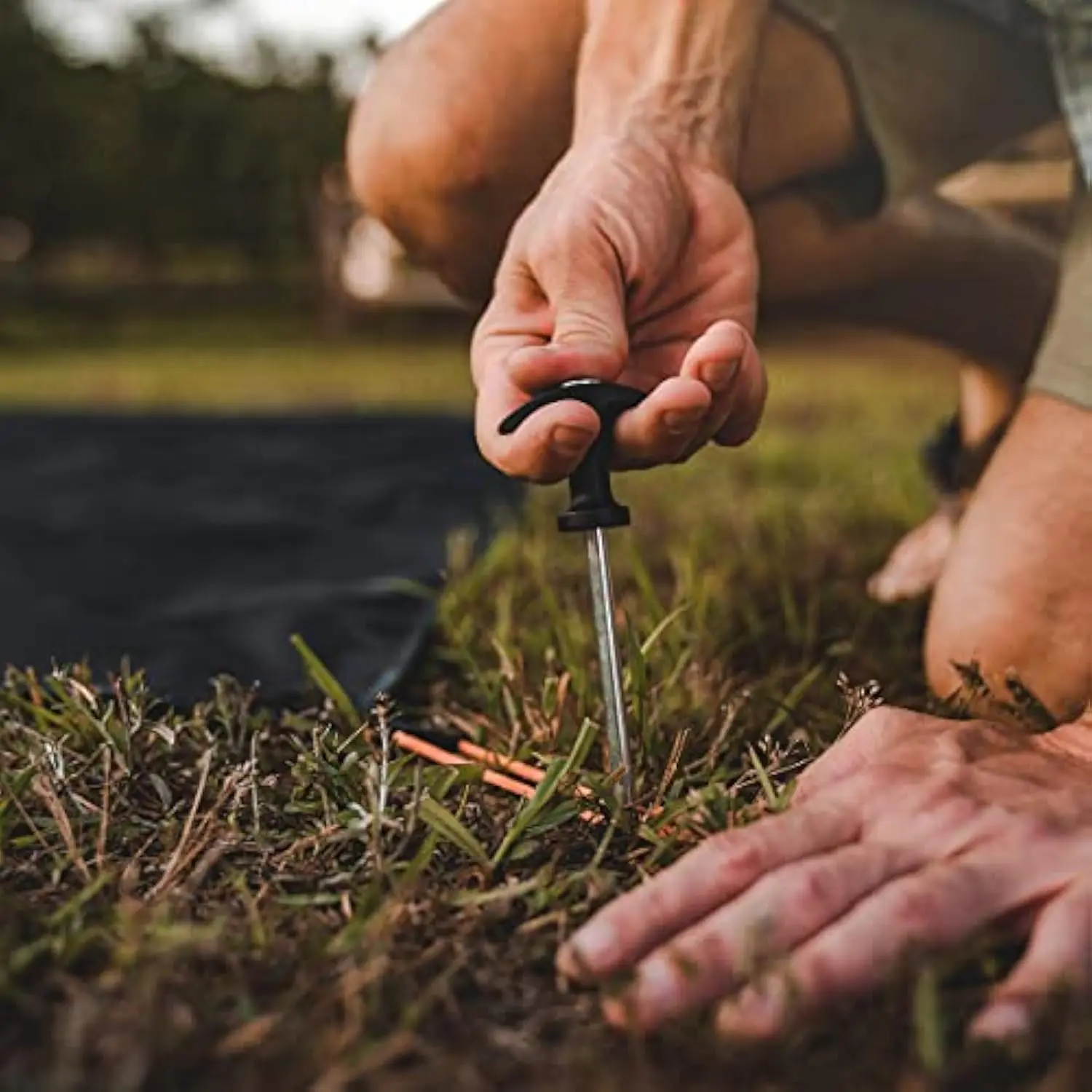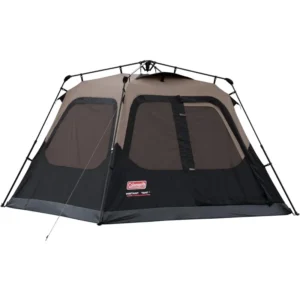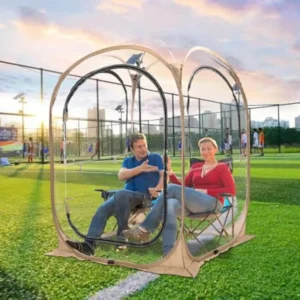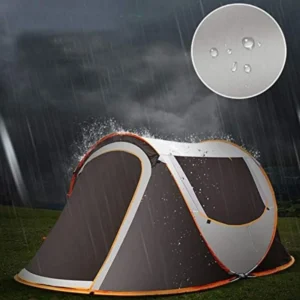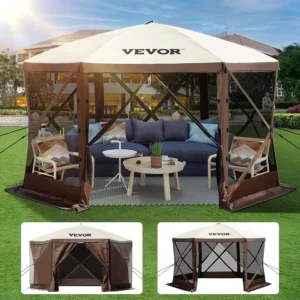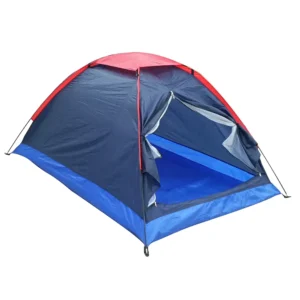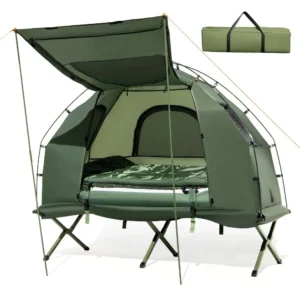What Makes a Tent “Quick Setup” for Beginners?
For first-time campers, the thought of struggling with tent poles and complex instructions can be daunting. Quick setup tents solve this problem through intuitive designs that minimize steps, confusion, and frustration. These user-friendly shelters go beyond just speedy assembly—they incorporate foolproof systems that build confidence in beginners and enhance the overall camping experience.
The difference in setup time is remarkable. Traditional tents typically require 10-15 minutes of careful pole threading, clip attaching, and stake positioning. In contrast, modern finding your perfect quick-setup tent options reduce this process to anywhere from 30 seconds to 3 minutes. This dramatic time savings transforms the first moments at a campsite from potentially stressful to surprisingly simple.
The evolution of tent technology has increasingly focused on user experience. Manufacturers have recognized that complex setup procedures discourage new campers and have responded with innovative designs that prioritize simplicity. Understanding what is quick-pitch tent technology helps beginners recognize the features that will make their first camping experiences more enjoyable.
The connection between tent setup complexity and overall camping enjoyment cannot be overstated. When setting up your shelter is intuitive rather than intimidating, you begin your outdoor adventure with confidence instead of frustration—setting a positive tone for the entire experience.
Types of Quick Setup Tents: Choosing Your Perfect Match
Pop-Up Tents
- Mechanism: Pre-assembled flexible frame that springs into shape
- Setup Time: 30 seconds to 1 minute
- Weight Range: 4-8 pounds (1.8-3.6 kg)
- Pros:
- Virtually instant setup
- Perfect for absolute beginners
- Ultra-portable for short trips
- Cons:
- Typically less durable in strong winds
- Often smaller interior space
- Can be challenging to fold back into carrying case
Instant/Hub-Style Tents
- Mechanism: Pre-attached poles with central hub system
- Setup Time: 1-3 minutes
- Weight Range: 10-20 pounds (4.5-9 kg)
- Pros:
- Excellent balance of ease and stability
- More spacious interior options
- Better durability than pop-ups
- Cons:
- Slightly heavier than pop-ups
- Higher price point
- Bulkier when packed
Inflatable Tents
- Mechanism: Air beams replace traditional poles
- Setup Time: 3-5 minutes (with pump)
- Weight Range: 10-25 pounds (4.5-11.3 kg)
- Pros:
- No poles to break
- Impressive stability in wind
- Simple concept (just inflate)
- Cons:
- Requires pump (extra equipment)
- Usually the most expensive option
- Puncture risk (though repairs are simple)
Each tent type offers different benefits for new campers. While the ultimate guide to fast-setup tents provides comprehensive details, beginners should consider their specific needs. Pop-ups offer maximum simplicity, hub-style tents provide balance between ease and durability, and inflatables deliver stability with straightforward setup.
Many beginners appreciate the benefits of pop-up camping tents for weekend adventures, while others may prefer the added stability of instant camping tent options, especially if camping with family or in variable weather conditions.
Essential Features for Beginner-Friendly Quick Setup Tents
When selecting your first tent, certain features will significantly impact your comfort and confidence in the outdoors:
Truly Beginner-Friendly Setup
Look for color-coded components, minimal separate parts, and clear visual instructions. The best quick-setup options have intuitive designs that make sense even without instructions. Many easy setup camping tent models provide video tutorials showing the entire process in under a minute.
Weather Protection Essentials
- Waterproof Rating: Look for at least 1500mm hydrostatic head (the pressure at which water will penetrate fabric). For context, light rain is about 1000mm, while heavy downpours exceed 3000mm.
- Sealed Seams: These prevent water from seeping through stitching points.
- Bathtub Floors: Curved floor fabric extends up the tent walls, preventing ground-level water entry.
For peace of mind in unpredictable weather, waterproof pop-up tent options combine quick setup with reliable protection.
Size and Capacity Considerations
Tent capacity ratings are typically optimistic. A 2-person tent usually means two people with minimal gear can fit snugly with approximately 30 square feet (2.8 square meters) of floor space. For comfort, especially for beginners, consider upsizing by one person from your actual group size.
Ventilation Features
Adequate airflow prevents condensation (which beginners often mistake for leaking). Look for mesh panels, adjustable vents, and multiple doors. These features become increasingly important in humid environments or when camping with multiple people.
Durability Factors
While quick-setup tents prioritize convenience, material quality still matters. For entry-level use, look for:
* Floor material thickness of at least 120-150 denier
* Fiberglass or aluminum pole construction (the latter being lighter but more expensive)
* Reinforced stress points at corners and entryways
Portability Considerations
Quick-setup tents for beginners typically weigh between 4-12 pounds (1.8-5.4 kg) when packed. Consider your transportation method and camping style—car campers can prioritize features over weight, while those walking to sites should consider lighter options.
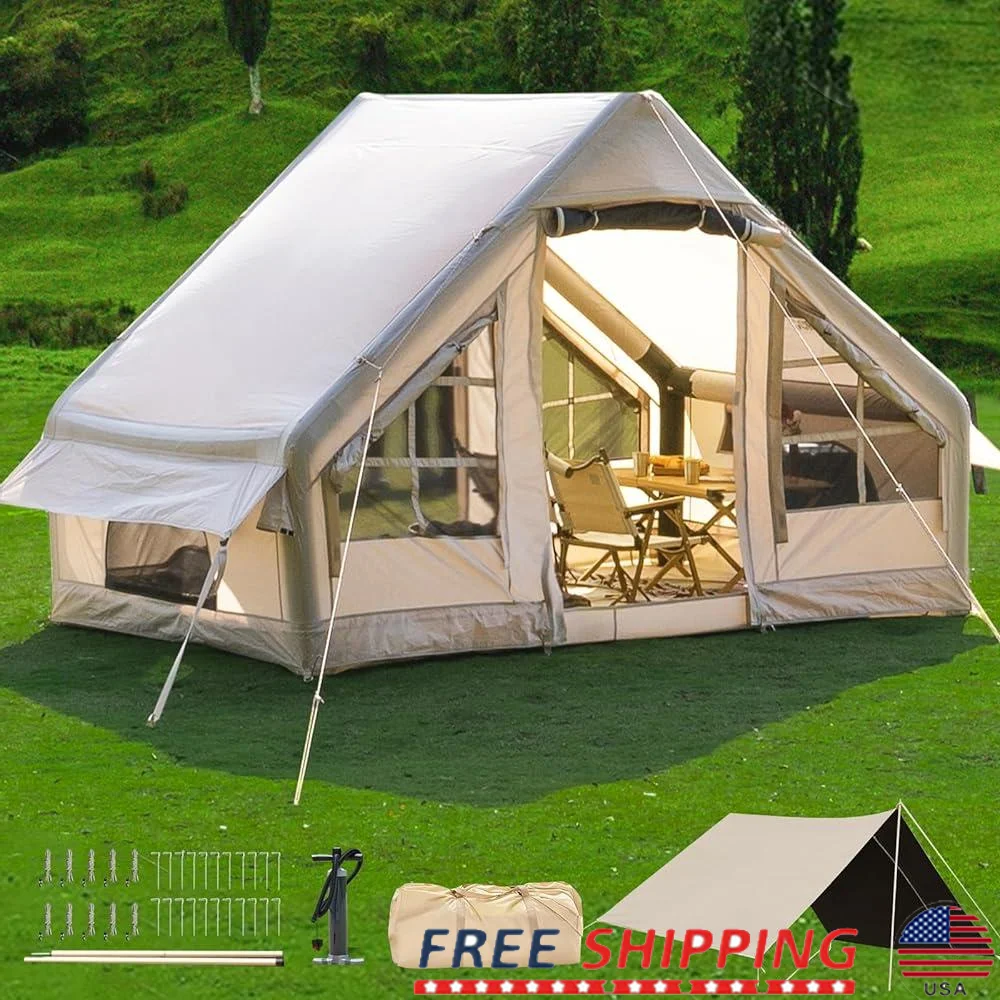
Our Top Quick Setup Tents for New Campers
Best Overall Quick Setup Tent for Beginners
- Setup Mechanism: Hub-style with pre-attached poles
- Capacity: 4-person
- Weight: 9.5 pounds (4.3 kg)
- Packed Size: 30” x 10” (76 cm x 25 cm)
- Key Features: Color-coded system, reinforced corners, mesh roof for ventilation
- Setup Time: 90 seconds average
- Weather Rating: 2000mm waterproof
- Pros:
- Incredibly intuitive setup
- Spacious interior with vertical walls
- Excellent rain protection
- Included gear loft and pockets
- Cons:
- Slightly bulkier when packed
- Mid-range price point
Best Budget-Friendly Instant Tent
- Setup Mechanism: Pre-attached pole system
- Capacity: 2-person
- Weight: 6.4 pounds (2.9 kg)
- Packed Size: 24” x 8” (61 cm x 20 cm)
- Key Features: Single-piece design, weather-resistant rainfly
- Setup Time: 60 seconds average
- Weather Rating: 1500mm waterproof
- Pros:
- Exceptional value
- Lighter than many comparable models
- Simple take-down process
- Cons:
- Less durable in high winds
- Limited interior space
- Fewer ventilation options
Simplest Pop-Up Tent for Absolute Beginners
- Setup Mechanism: True pop-up with flexible frame
- Capacity: 2-person
- Weight: 5.2 pounds (2.4 kg)
- Packed Size: 28” round × 3” thick (71 cm × 7.6 cm)
- Key Features: Instant setup, dual doors, mesh windows
- Setup Time: Under 10 seconds
- Weather Rating: 1200mm waterproof
- Pros:
- Unbeatable setup simplicity
- Perfect for festivals or backyard camping
- Dual doors improve access and ventilation
- Cons:
- Less suitable for adverse weather
- Requires practice to fold away
- Limited headroom
Among the best instant tent outdoor adventures options, those designed specifically for beginners offer the optimal balance of simplicity and functionality. For couples or solo campers, 2-person pop-up tents provide an excellent entry point to camping without complex setup procedures.
Best Quick Setup Tent for Small Families
- Setup Mechanism: Hub-style with telescoping poles
- Capacity: 6-person
- Weight: 16.8 pounds (7.6 kg)
- Packed Size: 42” × 12” (107 cm × 30 cm)
- Key Features: Room divider, multiple doors, generous headroom
- Setup Time: 2-3 minutes
- Weather Rating: 2500mm waterproof
- Pros:
- Creates private sleeping areas
- Standing height throughout
- Excellent for longer trips
- Cons:
- Higher investment
- Requires more setup space
- Heavier to transport
Best Lightweight Quick Setup Option
- Setup Mechanism: Simplified pole system
- Capacity: 2-person
- Weight: 5 pounds (2.3 kg)
- Packed Size: 18” × 7” (46 cm × 18 cm)
- Key Features: Aluminum poles, trail-friendly design, simple 3-step setup
- Setup Time: 2 minutes
- Weather Rating: 1800mm waterproof
- Pros:
- Extremely portable
- Works well for backpacking
- Quick setup without sacrificing stability
- Cons:
- Less interior space
- Higher price for lightweight materials
- Less intuitive than true pop-ups
Easy Setup Camping Tent, Instant Camping Tent
Instant Cabin Tent Double Layer Canvas 1-Minute Setup Spacious Family Camping Shelter with Air Vents$308.10 Select options This product has multiple variants. The options may be chosen on the product pagePop Up Dome Tent, Waterproof Pop Up Tent
$218.89 Select options This product has multiple variants. The options may be chosen on the product page- $633.01 Select options This product has multiple variants. The options may be chosen on the product page
Easy Setup Camping Tent, Trekking Pole Backpacking Tent
$142.40 Select options This product has multiple variants. The options may be chosen on the product pageEasy Setup Camping Tent, Waterproof Camping Tent
All-in-One Elevated 1-Person Camping Tent Cot with Integrated Sleeping System for Outdoor Adventures$535.16 Select options This product has multiple variants. The options may be chosen on the product page
Common Setup Mistakes and How to Avoid Them
Skipping Practice at Home
Nearly 65% of first-time campers report frustration with their tent setup, usually because they’re attempting it for the first time at the campsite. Set up your tent at least once in your yard or living room before your trip to familiarize yourself with the process.
Ignoring Instructions
Even with quick-setup tents, reading the specific instructions matters. Each model has unique features and processes—spending two minutes reviewing them can save twenty minutes of frustration in the field.
Forcing Components
When parts don’t align easily, forcing them often causes damage. If something isn’t fitting, stop and reassess rather than applying more pressure. Most quick-setup systems require minimal force when done correctly.
Choosing Poor Tent Sites
Setting up on roots, rocks, or slopes makes even the easiest tent problematic. Look for flat, clear ground free of sharp objects. Remove pinecones, sticks, and rocks before placing your tent.
Improper Staking and Guy Lines
About 40% of beginners don’t properly secure their tents with stakes and guy lines. Even quick-setup models need proper anchoring, especially in windy conditions. Use stakes angled at 45 degrees away from the tent for maximum hold.
Rushing the Takedown
Proper compact instant tents weekend adventures storage begins with careful dismantling. Fold these tents according to specific instructions to avoid damaging the quick-setup mechanisms. Following the how to pitch instant tent guidance ensures your tent remains functional for future trips.
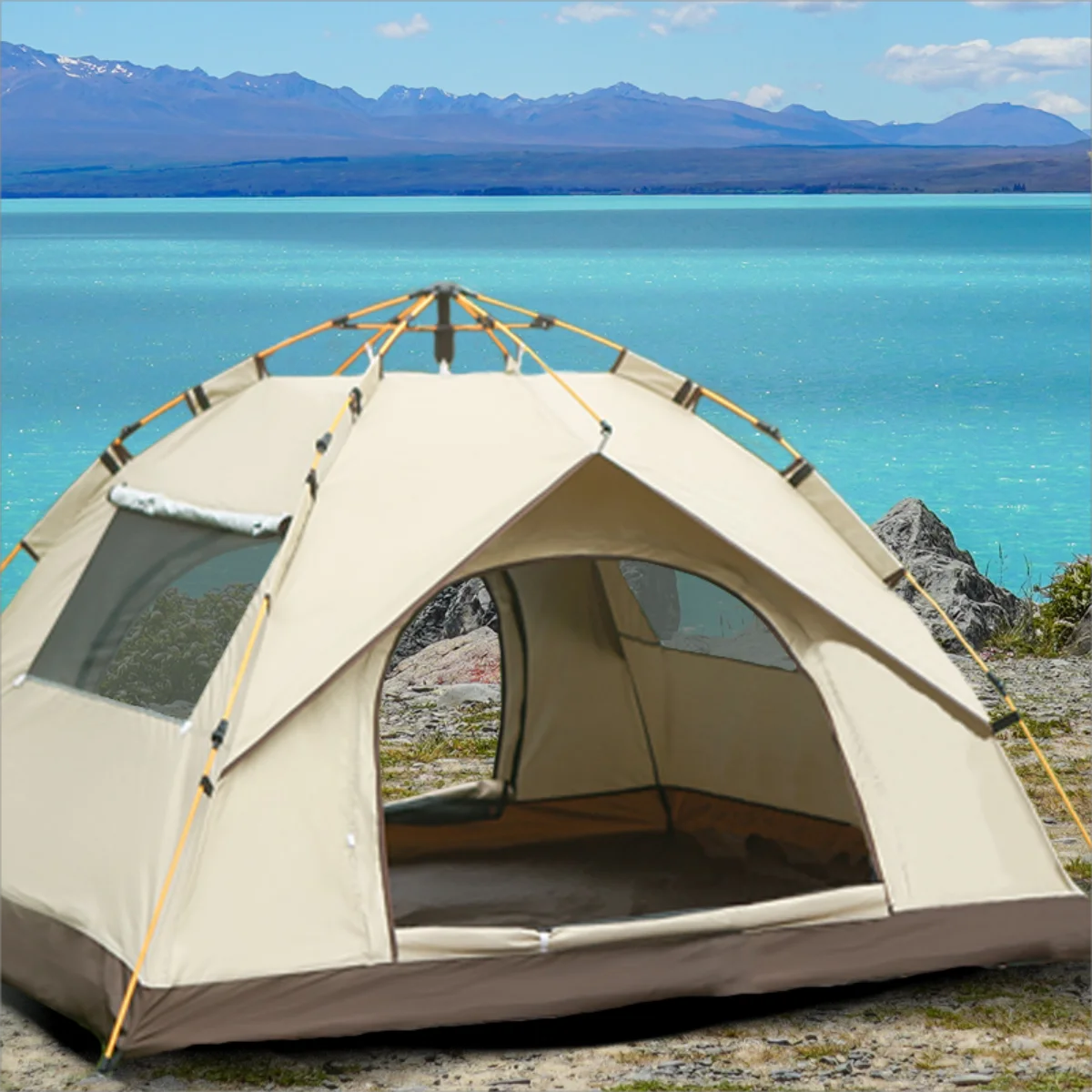
Beyond the Tent: Essential Accessories for Quick Setup Success
While quick-setup tents simplify the shelter process, complementary accessories enhance your comfort and protect your investment:
Ground Protection
- Tent Footprints: These custom-sized ground cloths protect your tent floor from abrasion and moisture.
- Tarps: A budget-friendly alternative to footprints, though requiring manual sizing (cut smaller than tent floor to prevent water collection).
Terrain-Appropriate Stakes
- Standard Stakes: Work well in normal soil conditions
- Sand Stakes: Wider design for loose soil or sand
- Snow/Hard Ground Stakes: Stronger construction for challenging ground
Emergency Repair Solutions
- Seam Sealer: Reinforces vulnerable stitch lines
- Tenacious Tape: Instant, waterproof repair for tears
- Pole Repair Sleeve: Aluminum tube that splints broken tent poles
Lighting for Nighttime Setup
Headlamps provide hands-free illumination if you need to set up after dark. Models with red light settings preserve night vision while providing enough light for tent assembly.
These accessories complement lightweight pop-up tent options, ensuring that your simplified shelter system remains functional across diverse camping situations.
Weather Considerations: When Quick Setup Meets Mother Nature
Quick-setup tents perform differently across weather conditions:
Rain Performance
Most entry-level quick-setup tents handle light to moderate rain well but may struggle in sustained downpours. Additional seam sealing before your first trip can improve waterproofing, and proper site selection (avoiding depressions where water collects) is crucial.
Wind Tolerance
Pop-up tents typically withstand winds up to 15-20 mph (24-32 km/h) when properly staked, while hub-style instant tents may handle 25-35 mph (40-56 km/h). Position doors away from prevailing winds and use all available guy lines in breezy conditions.
Temperature Management
Quick-setup tents generally excel in mild to warm conditions. In hot weather, maximize mesh openings and position your tent in afternoon shade. For colder camping, consider bringing additional insulation, as most beginner-friendly models prioritize ventilation over heat retention.
Understanding how pop-up tents stay dry in rain helps beginners prepare appropriate modifications for changing weather conditions.
FAQs: What Beginner Campers Often Wonder About Quick Setup Tents
Are pop-up tents durable enough for regular camping?
Most pop-up tents are designed for occasional use and fair weather camping. They typically last 15-30 nights of use when properly maintained. For frequent camping, consider hub-style instant tents which offer better durability while still providing simple setup.
Can one person truly set up an “instant” tent alone?
Yes! Most quick-setup tents are designed specifically for solo setup. Hub-style and pop-up designs require minimal strength and coordination—perfect for independent campers. Larger family-sized instant tents may be easier with two people but are still manageable alone.
How much should I expect to spend on my first quick setup tent?
Quality entry-level quick setup tents typically range from $60-$150 for 1-2 person models. Family-sized options (4-6 person) generally start around $120 and can exceed $300 for premium features. Consider this an investment in your outdoor comfort rather than focusing solely on finding the lowest price.
What’s the hardest part about using a quick setup tent?
For most beginners, the most challenging aspect is actually the takedown and repacking. Many easy setup tents weekend camping models spring open easily but require specific folding techniques to return to their compact carrying size. Watching manufacturer videos and practicing at home significantly improves this skill.
Are quick setup tents suitable for all seasons?
Most beginner-friendly quick setup tents are designed for 3-season use (spring, summer, fall) in mild conditions. They prioritize ventilation and easy setup over winter weather resistance. For cold-weather camping, consider more specialized gear designed for those conditions.
How long do beginner-friendly quick setup tents typically last?
With proper care and moderate use (5-10 outings per year), most quality quick-setup tents will last 3-5 years. Regular maintenance and appropriate storage significantly extend this lifespan.
How to Properly Store and Maintain Your Quick Setup Tent
Proper care dramatically extends the life of your quick-setup tent:
Cleaning Best Practices
- Always clean your tent when it’s fully set up, not packed
- Use non-detergent soap and lukewarm water for spot cleaning
- Never machine wash or dry clean tent materials
- Focus on zippers and pole connections where dirt accumulates
Drying Requirements
Thoroughly air dry your tent before storage—even slight moisture can create mildew that damages waterproofing and creates unpleasant odors. Statistics show that proper drying alone can extend tent lifespan by up to 60%.
Storage Environment
Store your tent loose in a cool, dry place. Avoid compressed storage in its stuff sack for extended periods, as this strains the waterproof coatings and seams. A breathable cotton or mesh storage bag is ideal for long-term storage.
Maintenance Schedule
- After each use: Clean and thoroughly dry
- Every 5 uses: Check seams and repair any small tears immediately
- Annually: Apply waterproofing spray if water no longer beads on the rainfly
Waterproofing Treatments
Apply silicone-based waterproofing sprays to the rainfly and seam sealer to stitched areas after about 15-20 nights of use. This maintains the tent’s weather resistance as the original factory treatments gradually wear off.
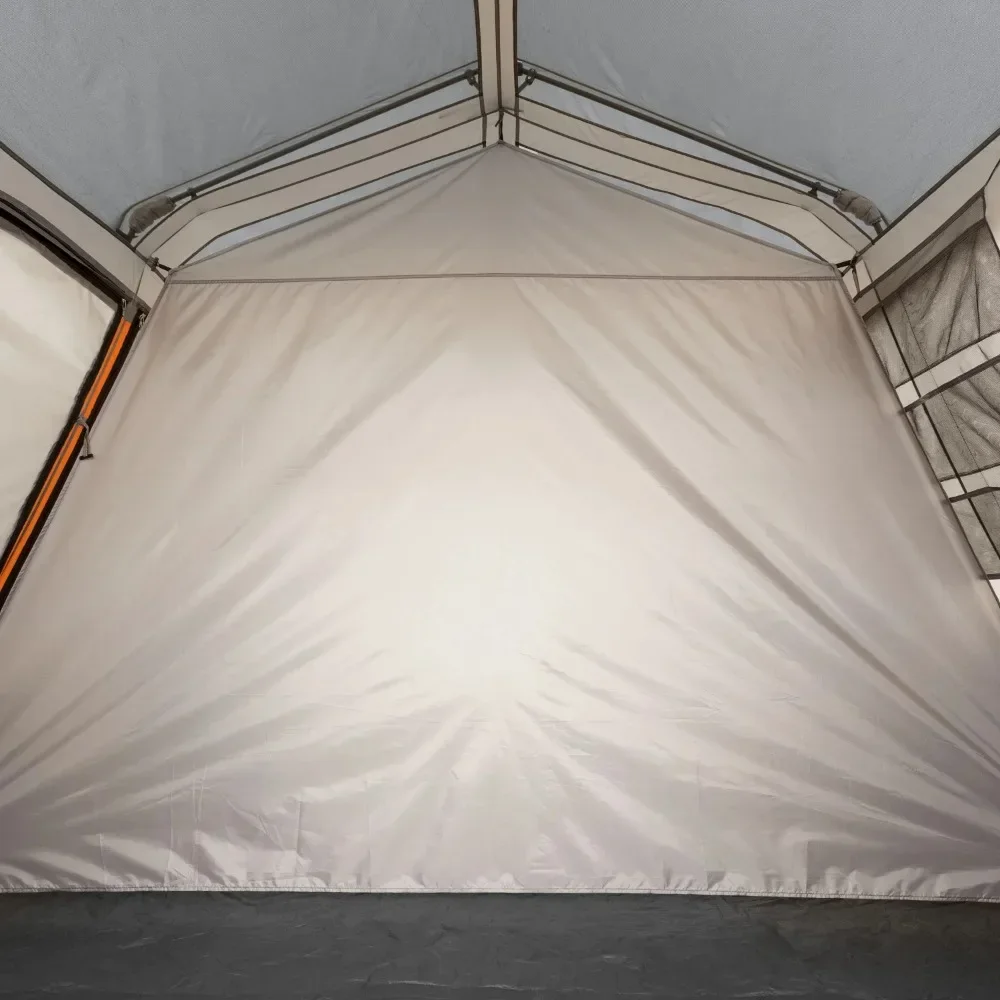
From Setup to Teardown: A Beginner’s Quick Guide
Pre-Setup Planning
- Choose flat ground free of rocks and roots
- Position your tent with doors away from prevailing winds
- Consider sun direction (morning sun is pleasant; afternoon sun can create an oven effect)
- Remove all pointy debris from the site
Basic Setup Sequence
For pop-up tents:
1. Remove from carrying case in open space
2. Unfold and allow to spring into shape
3. Secure with stakes at corners
4. Attach rainfly if separate
For hub-style instant tents:
1. Lay tent flat with hub system up
2. Extend legs until they click into place
3. Lift central hub until structure rises
4. Lock corners into position
5. Secure with stakes
Common Challenges and Solutions
- Poles seem too tight: Never force them—check for misalignment or obstructions
- Rainfly seems small: Ensure tent is fully expanded and corners are properly positioned
- Zipper sticks: Use both hands (one to hold fabric, one to zip) and never force
Teardown Best Practices
- Remove all personal items and shake out dirt/debris
- Allow morning dew to dry before packing when possible
- Follow manufacturer-specific folding patterns
- Use the “burping” technique to remove excess air before securing stuff sack
The quick assembly tents guide provides detailed visuals for these processes, helping beginners master both setup and proper packing techniques.
At Explore Elements, we believe that your camping experience should focus on enjoying nature rather than wrestling with complicated equipment. Our selection of beginner-friendly quick setup tents is designed to get you outdoors with minimal frustration and maximum enjoyment, whether you’re camping in your backyard or embarking on your first wilderness adventure.

